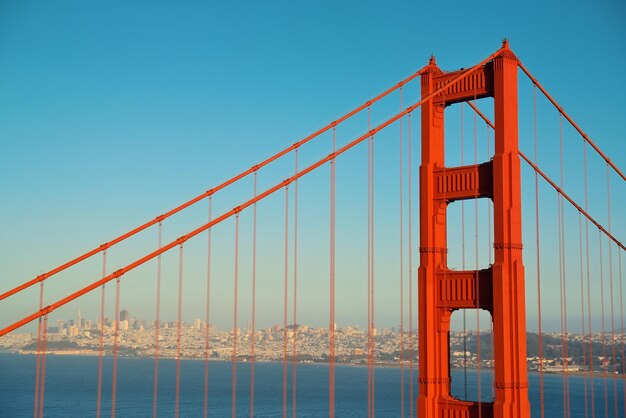Interesting Facts About the Golden Gate Bridge

The Golden Gate Bridge is one of the most iconic landmarks in San Francisco.
It took four years to construct the Golden Gate Bridge, from 1933 to 19
3. The bridge spans the Golden Gate Strait, the entrance to the San Francisco Bay from the Pacific Ocean.
The Golden Gate Bridge connects the city of San Francisco to Marin County.
The total length of the bridge is 8,981 feet (2,737 meters).
It is painted in a unique reddish-orange color called International Orange.
The Golden Gate Bridge was the world’s longest suspension bridge when it was completed.
It stands 746 feet (227 meters) tall, making it one of the tallest bridges in the world.
An estimated 10 million people visit the Golden Gate Bridge each year.
The bridge has a total of six lanes, three in each direction.
It is not just a transportation route; the Golden Gate Bridge is also a popular tourist attraction.
The bridge was designed by engineer Joseph Strauss and architect Irving Morrow.
It has become a symbol of engineering and architectural excellence.
The Golden Gate Bridge has been featured in many movies, commercials, and music videos.
It is also a popular spot for photography enthusiasts.
The bridge has withstood strong winds, earthquakes, and constant exposure to saltwater without major damage.
A network of conventional steel suspension cables holds up the bridge.
The Golden Gate Bridge has a weight limit of around 64,000 kilograms per axle.
Interesting Facts About the Golden Gate Bridge part 2
It costs around $10 million per year to maintain the bridge.
The bridge has been a suicide site since its opening, with a barrier net being added in recent years to prevent suicide attempts.
The construction of the Golden Gate Bridge was considered too dangerous for workers, but only 11 lives were lost during construction.
The bridge has become a symbol of hope and freedom for many immigrants arriving in the United States through San Francisco.
It is often depicted in artwork, photographs, and postcards.
The Golden Gate Bridge is featured on California license plates.
The iconic towers of the bridge stand 746 feet (227 meters) above the water.
Specialized engineers have to travel inside the bridge’s anchorage chambers to inspect and maintain it.
The bridge is designed to move and sway with the winds, allowing it to withstand earthquakes.
The bridge’s cables have a total length of 80,000 miles, enough to circle the Earth three times.
It is estimated that 1.2 million pounds of paint are used to repaint the Golden Gate Bridge every year.
In 1987, the bridge became a designated California Historical Landmark.
The bridge has been closed three times due to extreme weather conditions: once in 1951 due to high winds and twice in 1982 and 1983 due to heavy fog.
The colors of the bridge’s paint change based on weather conditions, appearing brighter on sunny days and darker on cloudy days.
The Golden Gate Bridge is known for creating a microclimate, causing the area surrounding it to be windier and colder than nearby neighborhoods.
Many people have attempted to swim across the Golden Gate Strait but only a few have succeeded due to strong currents and cold water temperatures.
The bridge has become a popular location for marriage proposals and romantic gestures.
It is estimated that it would cost around $1.5 billion to build the Golden Gate Bridge in today’s dollars.
The Golden Gate Bridge has been recognized as one of the Wonders of the Modern World.
The bridge has become a symbol of resilience and strength for the city of San Francisco.
The Golden Gate Bridge hosts an annual Bridge to Bridge running race, where participants run from the Golden Gate Bridge to the Bay Bridge.
The bridge’s foundation is made up of over 350 concrete piles.
The Golden Gate Bridge was the first major suspension bridge to use vertical, rather than horizontal, suspension cables.
Since its construction, the Golden Gate Bridge has become an important transportation route, with over 100,000 vehicles crossing it daily.
In 1989, the bridge was closed for a month following the Loma Prieta earthquake to ensure its safety.
The bridge’s toll plaza was automated in 2000, eliminating the need for toll collectors.
The Golden Gate Bridge remains an enduring symbol of the city of San Francisco and a marvel of engineering and design.

